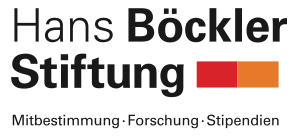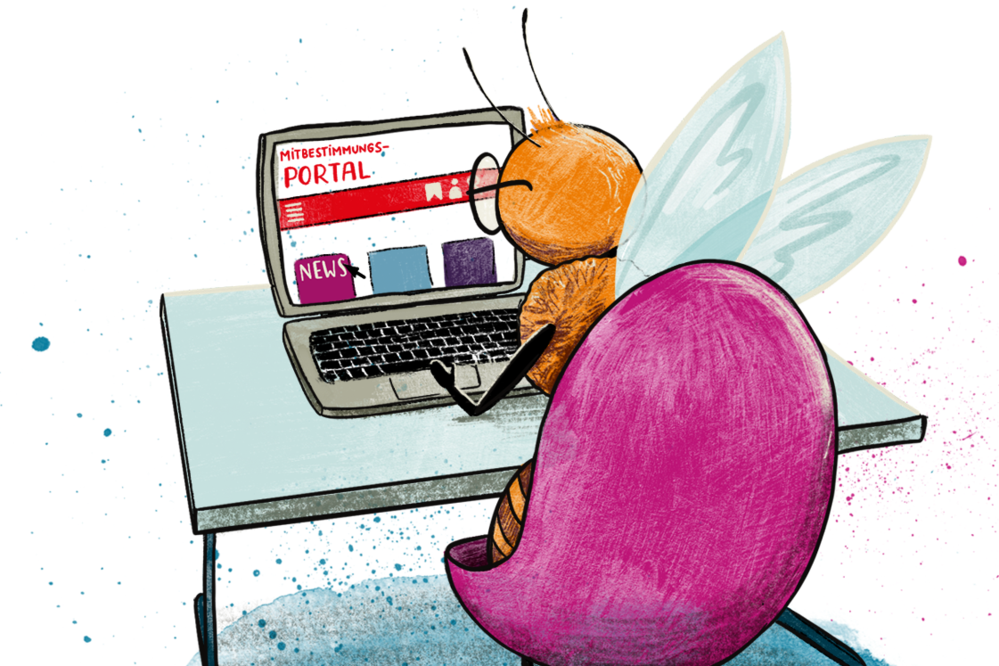Column
The "Uber way" of precarious work
Think Uber is gone from Germany? Think again. It never really left, and now it is pushing to expand operations. That would be a mistake.
Recently I was on a Berlin radio show with several taxi drivers and small taxi owners, including the head of the Berliner Taxi-Innung and the co-founder of Taxi Deutschland. All of them were worried that their livelihoods and industry was about to be upended – “disrupted”, as they say in Silicon Valley. That’s because Uber CEO Dara Khosrowshahi has been on a goodwill tour of Germany and Europe, trying to expand his company’s gigantic global footprint in the local transportation business.
But that would be a tragedy for German taxi drivers and small “mom and pop” taxi owners, as well as for the urban quality of life. In city after city in the US, not only are the environmental and traffic congestion issues increasingly severe as a result of ridesharing companies flooding the streets with cars, but in addition, the labor impact has been extremely harsh. Indeed, since the beginning of the year, New York City has seen six suicides of taxi drivers and owners, driven to despair by their plummeting economic prospects.
Hasn’t Uber been kicked out of Germany and most of Europe?
Many people believe that Uber was shut down by a German court and ejected from France, Spain, Italy and other member states. So I was surprised when I was in Berlin a few months ago, and a friend of mine opened his Uber app and showed me a dozen Uber drivers lurking around the immediate vicinity. How could this be?
Uber has different services, and in Germany the Silicon Valley-based company had shut down Uber Pop, which was its lowest-cost service that used unlicensed, underinsured and inexperienced drivers. The battle over that closure was contentious and made lots of headlines.
But at the same time, very quietly, in May 2015, the company launched its Uber X platform in Berlin, Munich, Frankfurt, Düsseldorf and Hamburg, which uses drivers who are registered as private-hire autos and have been granted a concession from the transportation authorities. The drivers themselves are “solo self-employed,” many of them driving their own registered vehicles, with Uber acting as the provider of the technology and brand name. Often these drivers do not drive exclusively for Uber; if you look at the dashboard of many of these drivers, they have multiple smart phones mounted, including for MyTaxi and often a local taxi company, and they work all of those apps simultaneously.
Uber merely shifted to a lower gear, biding its time.
Denmark has similar restrictions for Uber, yet recently 1500 drivers were prosecuted for driving for Uber without a legal taxi license. Denmark had implemented a law in February 2017 that required taxi drivers to not only be commercially licensed, but also to have seat occupancy sensors and meters. That prompted Uber to shut down its services there. Yet here were over a thousand Uber drivers operating illegally, and being fined anywhere from €5,200 - €65,000. Uber has never cared to follow unwelcome laws, and its deep-pocketed capital has been willing to wait patiently for an opportunity to sneak back in.
So Uber has not gone away from Germany or Europe, not by a long shot. It merely shifted to a lower gear, maintaining its presence and biding its time. It still advertises on its website for drivers in Germany, and lists three offices in Berlin, Munich and Düsseldorf. Which is pretty strange for a company that supposedly has “gone away.”
Naturally Berlin taxi drivers and small taxi owners are nervous, and they have good reason to be, as the full ridesharing picture in the US shows. But these taxi drivers also are worried about certain new German entrants, such as Moovel, which is a new joint venture of Daimler AG and BMW Group to create a mega-mobility services platform. Their fear is that these big companies, whether US or German, will be able to dominate the market, dictate prices, and offer all sorts of bonuses and cheap fares to customers that will drive taxis and small taxi owners out of business. Even with Uber X, while no studies exist in Germany about its usage, friends tell me that it seems to be cheaper than traditional taxis. Uber has been known to subsidize half of the cost of every ride in the US as a way of attracting consumers and gaining market share. Berlin taxi drivers are really worried about this kind of price-gouging and related tactics, because they believe the authorities are not really tracking what Uber is doing, nor is the media, because of the erroneous perception that this company has “gone away.”
And now Uber CEO, Dara Khosrowshahi, is testing the waters to see if the time is ripe for expanding operations. He was in Munich last January, speaking at a tech conference hosted by Hubert Burda Media, and then back in Germany again in June for Axel Springer’s NOAH conference and for a “puff piece” interview in Bild. For all of the regular taxi drivers who play by the rules, all of this news is alarming and amounts to a very real threat.
The terrible labor conditions of ride-sharing
While originally Uber held out some promise as a flexible form of viable part-time employment, increasingly that has proven to be a dead end. Uber’s Khosrowshahi has insisted that drivers’ wages are sufficient, but a recent study by Stanford University researchers thoroughly debunks that claim. It found that the median profit for Uber and Lyft drivers in the United States is no more than €8,7 per hour, once you subtract their considerable costs for driving their own vehicle (gasoline, insurance, vehicle wear and tear, etc.). Of the 1,100 drivers interviewed, around half earned less than the minimum wage in their state.
There are so many drivers that there is not enough work for all of them.
Pedro Acosta began driving for Uber shortly after the service arrived in New York in 2011. At first, he made a good living, but then the app started reducing its fares to attract more customers. Initially Uber only took 5% of each fare, but now its share is 25-30%. “They dropped the price so much, we have to work so many hours,” Acosta told the New York Times the day after he had worked an 11-hour shift.
Khosrowshahi also continues to repeat another Uber falsehood, that by not raising fares or wages and keeping fare low, drivers will wait less time between each fare and so they will actually earn more money. But as several studies have shown, the reason drivers wait so long between fares is because there are so many ridesharing drivers on the road that there is not enough work for all of them. For example, in New York City, 80,000 ridesharing vehicles swamp the 13,500 yellow taxis, and in San Francisco, there are about 9,000 Uber and Lyft cars on the road at any one time compared to 1,800 taxicabs. Consequently, a study in New York City found that the number of hours during which drivers did not have a passenger rose dramatically from virtually zero in 2013 to 36,500 by 2017, resulting in a proliferation of empty seats. Another study found that at any one time, one-third of the cars-for-hire are empty (an 81% increase from four years before), awaiting the next passenger and clogging the streets without any benefit to anyone. With so many for-hire vehicles on the road, not only are drivers waiting a long time between fares, but they now must drive much longer hours to earn the same amount of income.
Not surprisingly, according to Uber’s own internal study, half of its drivers leave after working only a year on the platform. Other studies have found far higher driver burn rates, an indication of high dissatisfaction among drivers.
Taxis sucked into the whirlpool
Traditional taxis and limousines also are being severely impacted by this. With so many ridesharing drivers, there is not enough work for taxis and limousines either. Sadly, this deterioration in economic opportunity was the major reason cited by six drivers in New York City who have committed suicide this year. Last February, limousine driver Doug Schifter, a 30-year veteran of the livery industry, killed himself with a shotgun in front of New York City Hall. Schifter left a lengthy Facebook post to express his and many drivers’ desperation over trying to cope with a glut of drivers that he said forced him to work more than 100 hours a week to earn the same income he previously earned in 40 hours.
Owners who have invested their life savings now find themselves in heavy debt, and desperate.
A few months later, taxi driver and owner Yu Mein Chow took his life by jumping into New York’s East River; he had taken out a large loan seven years before to buy a taxi medallion that gave him the right to operate his own taxi, his immigrant’s dream come true. At that time, medallions sold for more than $1 million but they now go for as low as $175,000 because of the glut of ridesharing drivers who don’t have to buy a medallion to drive for hire. Owners who have invested their life savings in a medallion now find themselves in heavy debt, and desperate.
“Independent” contractors: chained to a dim future
These rotten working conditions are exacerbated by the fact that ridesharing drivers have been treated as “independent contractors” (or “solo self-employed,” as it is called in Germany) instead of regular employees. In many respects, Uber is nothing more than a temp agency, in which the only job on offer is that of a taxi-like driver. Not only are wages low, but drivers receive no safety net benefits, such as health care, retirement, injured worker, unemployment compensation or paid sick leave or vacation.
Uber fired hundreds of drivers by algorithm without warning.
In addition, drivers have no job security, they can be cut off the app-based platform at any time. In the past, Uber has cut off all at once hundreds of drivers in Los Angeles and San Francisco because their rating from passengers or other performance metrics fell too low. Uber fired them all by algorithm without warning.
The degree of company control over its “independent” drivers remains a crucial question. A legal claim has been filed on behalf of tens of thousands of drivers who are suing Uber, insisting they are indeed employees under the strict control and management of Uber, not sovereign contractors. State agencies and courts have issued conflicting rulings over whether Uber drivers are employees or contractors, with agencies in California and New York saying the drivers are employees under those states’ laws, but judges in Pennsylvania and Florida ruling that Uber drivers are contractors, not employees. In the UK, an employment tribunal ruled that the drivers are in fact employees of the company; in Brazil, a judge also ruled that a driver should be considered as an employee.
Cities starting to push back
Even as the courts and administrative bureaucracies send mixed signals, various US cities are trying to enact sensible legislation. In New York City, which is Uber’s biggest market by far, the city council recently passed a year-long cap on the number of new ridesharing vehicles, and created a minimum wage for drivers of around $17 per hour. The law is the first attempt in the US to stop the growth of ridesharing.
many ridesharing drivers have called for forming a labor union.
Traditional taxis already have a vehicle limit, and for good reasons – to reduce both traffic congestion and ruinous competition among drivers. A balance must be found between having enough taxi-type vehicles to service demand but not so many that the streets are choked with traffic and drivers can’t earn a living.
Not surprisingly, many ridesharing drivers have called for forming a labor union. But it’s extremely difficult to do in the US, for two basic reasons. First, these drivers are what is known as a “distributed workforce,” working in isolation from each other. It is very challenging to bring these drives together for meetings so that they can get to know each other and discuss common issues and needs. Second, as long as drivers are legally regarded as solo self-employed, US law says they are not allowed to organize a union because that action could allegedly lead to collusion among the drivers, who are supposed to be competitors. It’s a ridiculous application of anti-trust law, and a classic example of how old labor laws can lag behind new ways of working.
Despite this legal minefield, the city of Seattle tried in 2015 to pioneer legislation that would allow NGOs – instead of unions – to organize these ridesharing drivers and collectively bargain over issues like wages. But the law was sued by the platform companies and pro-business groups, who argued that Uber and Lyft drivers are independent contractors and so do not have the right to unionize under federal law. A federal judge has blocked implementation of the law until the courts are able to rule on it.
cities should demand that Uber and Lyft share data about their drivers
Lacking any union representation, ridesharing drivers have launched several Facebook groups, including the “Uber and Lyft Drivers Breakroom” with 27,000 members where drivers can network and discuss organizing strategies and industry abuses. Until these drivers are recognized as actual employees or as workers with a right to organize a union, at the very least cities should demand that Uber and Lyft share their data about their drivers, so that drivers can use it to contact one another and organize or at least meet informally if they choose. Seattle and San Francisco are among cities that have demanded data from the ridesharing platforms, but these companies have resisted.
In short, the legacy of these companies amounts to a warning to the public and policymakers: If you do not provide people with good transportation options, they will use bad ones. Given the poor quality of underfunded public transportation in the US, and the inadequate supply and quality of traditional taxi service, some people have been glad to have another transportation option. Certainly, every individual lives a double life as both a worker and a consumer. The consumer in us all of course would love to have our own private chauffeur, in the form of Uber’s cheap, subsidized fares, and never use public transportation again. But in the process we are hurting other workers, in this case drivers and small taxi owners, and contributing to increased traffic congestion and carbon emissions, and undermining mass transportation (ridership on public transportation has declined in nearly every major US city, directly attributable to people using Uber rather than public transit). Uber and ridesharing comes with a steep societal price.
So German taxi drivers and small owners are right to fear an Uber invasion. In so many ways, ridesharing has taken the US backwards. It will do the same in Germany, or anywhere else in Europe, if it is not properly regulated. We need to vigorously educate ourselves about the pluses and minuses of platform capitalist companies, and decide how to regulate their services so that we can enjoy the benefits without suffering so many of the severe downsides.
German language version
-
Column
AI's impact on US workplaces continues to accelerate
-
Column
Trump and Musk mounting furious attack on labor rights and workers
-
Column
US support for codetermination from an unlikely source – conservative Republicans
-
Column
Can the EU and the US protect their 21st century workforces?
-
Column
Massive tech layoffs continue as companies retool for AI
-
Column
US labor unions strike over impacts of AI and new technologies
-
Column
Antitrust law is (finally) being enforced again in the U.S.
-
Column
Employer surveillance against workers spreads
-
Column
If it seems too good to be true … it probably is
-
Column
Helping gig workers help themselves
-
Column
Workers of the World…quit?
-
Column
Will US labor unions stand by Uber drivers and gig workers?
-
Column
Stirrings of union organizing in the “paradise” of Big Tech
-
Column
Will Pres. Joe Biden restore worker and union power?
-
Column
Corona-fied: employers spying on remote workers in their homes?
-
Column
The challenges of the post-coronavirus workforce
-
Column
Amazon workers fight back
-
Column
A blow against "bogus self-employment" and gig economy
-
Column
Renewing Worker Cooperatives for the Digital Age
-
Column
Codetermination takes the spotlight in the US
-
Column
Who will fight for the 'good jobs' economy?
-
Column
Trump attacks workers and the labor movement in the US
-
Column
The distributed workforce: what will jobs of the future look like?
-
Column
The "Uber way" of precarious work



